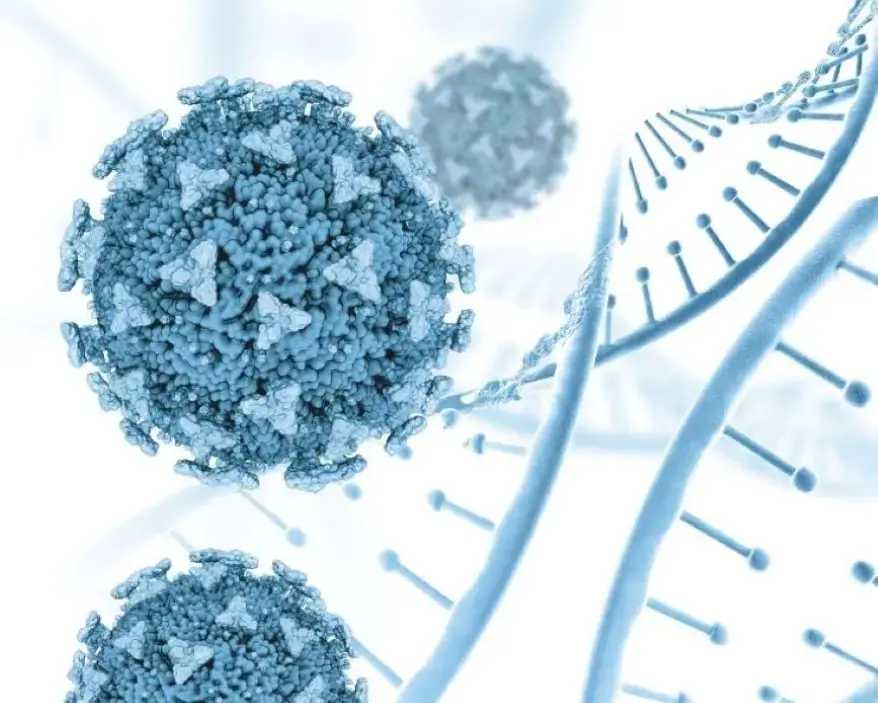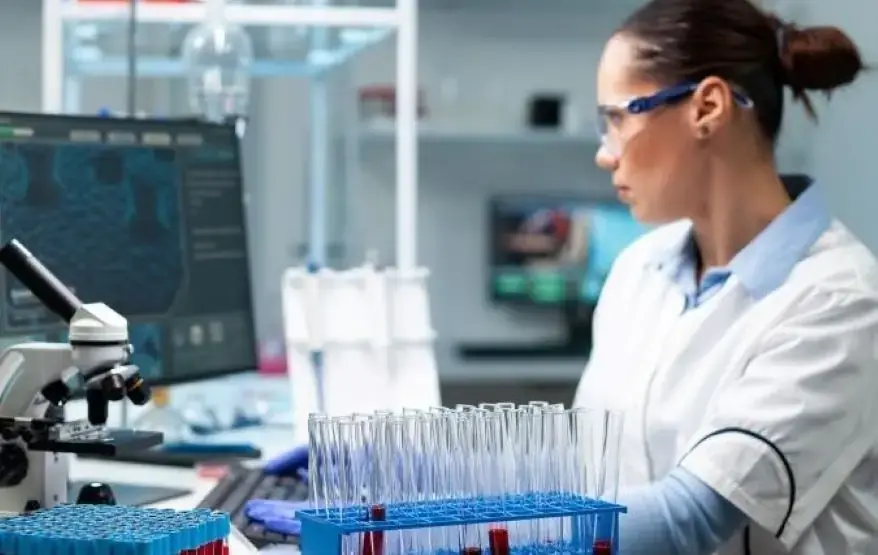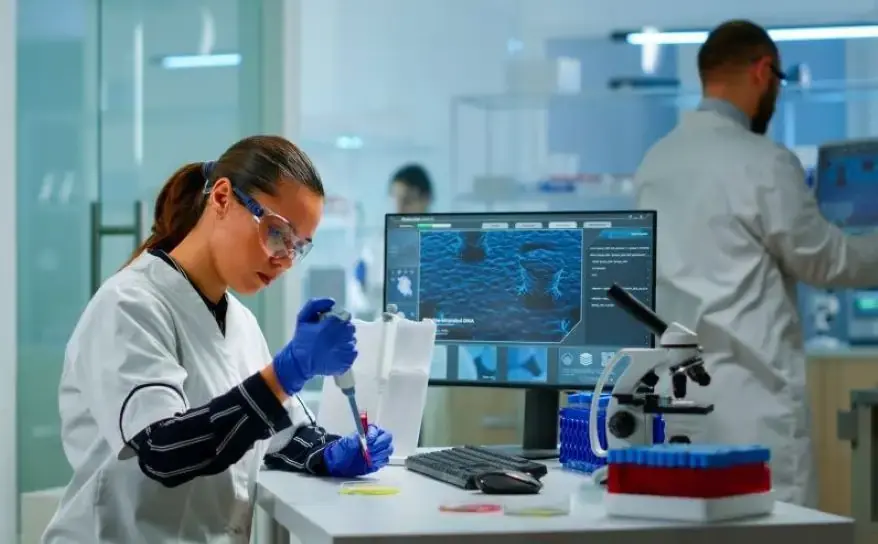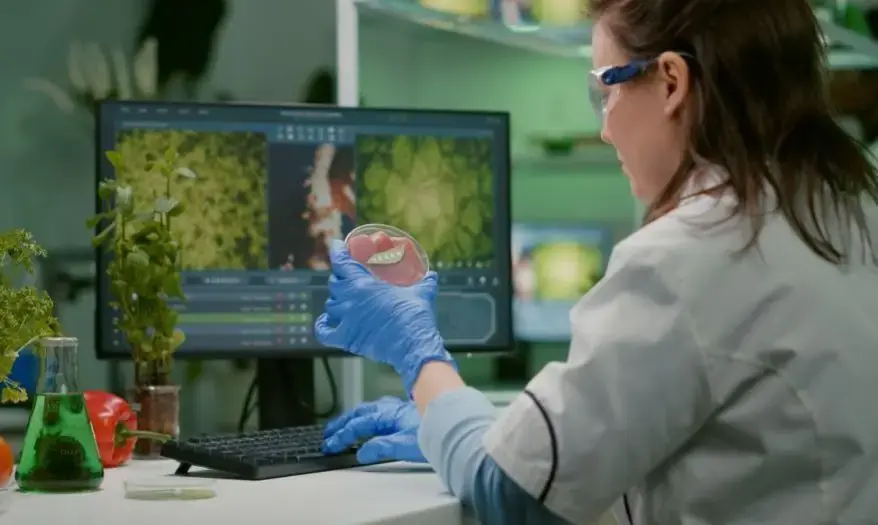Recombinant DNA Technology: A Key to Genetic Advances
Estimated reading time: 11 minutes
Understanding recombinant DNA technology involves several key steps that enable the manipulation of genetic material from different species. Also, the process begins with the use of restriction enzymes or restriction endonuclease to cut specific DNA sequences at precise locations, allowing for the isolation of a piece of DNA containing the desired nucleotide sequence. Indeed, scientists insert this single fragment of DNA into a plasmid or another vector. Further, creating recombinant DNA molecules. Then, they introduce these recombinant DNA constructs into a living cell, producing proteins like human insulin or growth hormone.
Scientists like Paul Berg and Werner Arber discovered restriction enzymes, paving the way for the development of rDNA technology. Namely, techniques such as the polymerase chain reaction (PCR) further enhance the ability to amplify recombinant genes and study recombinant antibodies. As a result, researchers can create new genetic combinations, leading to advancements in fields like molecular biology and biotechnology, including producing vaccines like the hepatitis B vaccine.
What is Recombinant DNA Technology?
Recombinant DNA technology emerged as a groundbreaking method that allows scientists to manipulate DNA molecules from all organisms. Thus, this technique involves the remixing of existing DNA sequences to create recombinant DNA molecules that contain desired DNA. Also, by using DNA ligase, scientists splice DNA into the host organism, allowing for the replication of recombinant DNA within cells.
Namely, in many applications, yeast cells serve as a convenient host. Once recombinant DNA is inserted into a host, the DNA molecules formed can express new traits. Undoubtedly, this process highlights how recombinant DNA differs from genetic recombination, as it creates novel recombinant DNA molecules rather than simply rearranging existing DNA sequences in essentially the same organism.

How does recombinant DNA technology work?
Recombinant DNA technology emerged with the discovery of methods to manipulate DNA molecules. In fact, this technology involves using circular DNA molecules, often derived from bacteria or yeast cells, to create recombinant DNA molecules. These molecules can originate from various sources, including the DNA of a virus, and they contain extra DNA sequences. By inserting recombinant DNA into the host organism, scientists can produce new recombinant proteins that can be used for various applications.
In addition, the process begins with cloning and DNA-cutting techniques that facilitate the insertion of specific DNA sequences used in the construction of recombinant DNA molecules. Once scientists create these recombinant DNA molecules, they introduce them into the target cells, where the cells integrate the molecules within the sequence and utilize the host’s cellular machinery. As a result, these cells can express the desired traits or produce valuable substances, showcasing the power of recombinant DNA technology in biotechnology and medicine.

Paul Berg (Biochemist, Nobel Prize in Chemistry, 1980)
The application of molecular biology will bring enormous benefits to humanity. It’s a powerful tool to address societal needs.
Key steps in Recombinant DNA technology
It involves several key steps to create recombinant DNA molecules within a bacterial or yeast cell. Initially, using restriction enzymes, specific DNA fragments are cut from chromosomal DNA and inserted into vectors, leading to the formation of recombinant DNA molecules. These recombinant DNA molecules can originate from different species using a variety of sources, enabling the expression of recombinant proteins within a living cell. Indeed, the process is possible because DNA molecules can be manipulated through enzymes and various laboratory techniques.
The outcome results from artificial methods that mimic the normal biological process that results in genetic recombination. Thus, by integrating the molecule into the DNA of the host cell, the desired traits can be successfully applied to make products like insulin or growth hormones. Moreover, this innovative technology has paved the way for advancements in genetic engineering, allowing scientists to create recombinant DNA molecules that hold immense potential in medicine and biotechnology.
Components of a recombinant DNA molecule
Recombinant DNA molecules are essential for genetic engineering, containing recombinant DNA that allows for the manipulation of genetic material. In 1968, Swiss microbiologist Werner Arber contributed to this field by identifying enzymes used to cut and splice DNA, also enabling the creation of recombinant proteins.
These recombinant DNA molecules can be descended from one progenitor, providing the host cell with the ability to produce new genetic combinations. Also, by creating copies of a single fragment, researchers can explore related topics in genetics and biotechnology, enhancing our understanding of cellular functions.
DNA Cutting with Restriction Enzymes
The first step in manipulating DNA involves precise cutting. Restriction enzymes act as molecular scissors, specifically targeting and cleaving DNA at distinct sequences. These enzymes naturally occur in bacteria to protect against viral invaders by slicing their DNA at specific recognition sites. In recombinant DNA research, scientists leverage this natural defense mechanism to dissect DNA into manageable fragments. Thus, this precision allows researchers to excise specific genes for further analysis or to create recombinant DNA. The cleavage leaves behind ends that can be fused with other DNA pieces, an essential process for genetic recombination.
Table Showing Common Restriction Enzymes and Their Recognition Sites
| Enzyme | Recognition Site |
|---|---|
| EcoRI | GAATTC |
| HindIII | AAGCTT |
| BamHI | GGATCC |
Thus, restriction enzymes are indispensable for any genetic engineering enterprise, setting the stage for subsequent DNA manipulation processes. This precision ensures that only the desired parts of the genome are captured and utilized, maintaining the integrity of the experimental outcomes.
The application of biotechnology is transforming the way we live and improving the quality of life for billions of people around the world— Franz-Ulrich Hartl
Role of Vectors in Cloning
Vectors serve as the vehicles for genetic information transfer. Imagine them as biological carriers, ferrying DNA fragments into host organisms where genetic coding can occur. For instance, Plasmids, bacteriophages, and artificial chromosomes commonly function as vectors. Each type offers unique advantages, depending on the experimental requirements. Plasmids, for example, are easy to manipulate and replicate independently within bacterial cells, making them ideal for cloning smaller fragments.
Roles of common vectors:
- Plasmids: Circular DNA used for cloning genes.
- Bacteriophages: Viruses that inject DNA into bacteria, useful for larger DNA fragments.
- Yeast Artificial Chromosomes (YACs): Suitable for very large DNA segments, capable of carrying human chromosome-sized DNA.
This step ensures that the recombinant DNA is inserted effectively into a host cell, where it replicates along with the host’s DNA. Also, in this symbiotic interaction, recombinant DNA technology harnesses the natural mechanisms of replication, allowing the new traits to manifest in successive generations.

Significance of Ligases in Recombination
The role of DNA ligases extends beyond simple bonding. Analyzing their function reveals an elegant mechanism winding through the heart of genetic engineering. Ligases mend the nicks in the DNA backbone by catalyzing the formation of phosphodiester bonds. Thus, this enzymatic action ensures that the DNA fragments, cut by restriction enzymes, are seamlessly joined to form a stable recombinant molecule.
Applications of recombinant DNA technology
Recombinant DNA technology used in Medicine
Using recombinant DNA technology, scientists can introduce foreign DNA into host organisms, creating recombinant DNA molecules. On the other hand, this process has revolutionized medicine by enabling the production of recombinant proteins, such as insulin and growth hormones, which are crucial for treating various diseases.
Also, the foundation of this technology was laid in 1968 by Swiss microbiologist Werner Arber, whose research paved the way for manipulating genetic material. All in all, recombinant DNA molecules are an integral part of the main cellular processes in biotechnology and pharmaceuticals.
Agricultural applications of recombinant DNA technology
Recombinant DNA technology has transformed agriculture by enabling the development of crops with enhanced traits. For instance, recombinant DNA molecules can introduce pest resistance or improve nutritional content in plants, leading to higher yields and reduced reliance on chemical pesticides.
Additionally, recombinant proteins produced in genetically engineered organisms can be utilized as biopesticides or biofertilizers, promoting sustainable farming practices. Since DNA was first manipulated in the 1970s, these advancements have significantly impacted food security and environmental sustainability.
Genetic Engineering in Pharmaceutical Production
The pharmaceutical industry embraces recombinant DNA technology to produce vital proteins, hormones, and antibodies with precision and safety. Additionally, human insulin, once extracted from animal sources, is now synthesized using recombinant DNA in bacterial cells. Thus, this advancement not only enhances production efficiency but also eliminates complications like allergic reactions derived from animal-sourced analogs.
The technology enables the development of vaccines and therapeutic agents, allowing scientists to treat diseases at the molecular level. Moreover, from small-scale experiments to industrial-scale production, recombinant DNA technology has redefined medicine, giving researchers tools to combat challenges like genetic disorders and infectious diseases.
Enhancing Crop Resistance with Gene Modification
Genetic modification of crops stands as a testament to recombinant DNA technology’s potential in agriculture. Also, by introducing genes that confer resistance to pests and environmental stresses, scientists enhance crop yield and quality. Hence, the alteration of crop genetics not only supports sustainability but also ensures food security.
For instance, Crops like Bt cotton, engineered to resist pest attacks, exemplify how genetic modifications can protect plants without excessive use of chemical pesticides. Thus, this biological fortification against natural threats lessens reliance on agrochemicals, promoting healthier farming practices while safeguarding ecosystems.

Role of recombinant DNA play in biotechnology
Recombinant DNA plays a pivotal role in biotechnology by enabling the creation of recombinant DNA molecules. Therefore, these molecules combine genetic material from different sources, allowing for the production of valuable recombinant proteins.
These recombinant DNA molecules are instrumental in developing therapies, vaccines, and agricultural enhancements. In addition, revolutionizing how we approach health and food security.
Process of gene cloning in recombinant DNA technology
In recombinant DNA technology, the process of gene cloning begins with the isolation of a specific gene of interest from an organism. Scientists insert this gene into a vector, creating recombinant DNA molecules that they introduce into host cells. Then, they transform these host cells, often bacteria or yeast, to produce genetically modified organisms capable of expressing the inserted gene
As a result, these organisms can synthesize recombinant proteins that hold significant value in medicine and industry.
In biotechnology, we are learning to alter the course of human history, one gene at a time— Richard Dawkins
Organisms used in recombinant DNA technology
Recombinant DNA technology allows scientists to manipulate genetic material from different organisms, creating recombinant DNA molecules. Therefore, by combining DNA sequences from various sources, researchers can produce new genetic combinations that have specific functions.
Scientists insert these recombinant DNA molecules into host organisms, which, in turn, express recombinant proteins for various applications, such as pharmaceuticals or agricultural improvements. Thus, this technology has revolutionized biotechnology, paving the way for advancements in medicine and crop engineering.
Conclusion
In gene cloning within recombinant DNA technology, scientists isolate a specific gene of interest and insert it into a vector, significantly a plasmid. Moreover, this vector facilitates the creation of recombinant DNA molecules by combining the target gene with the plasmid DNA.
Once scientists form recombinant DNA molecules, they introduce them into host cells, genetically modifying the organisms (GMOs). In conclusion, these host cells replicate the cloned gene and produce recombinant proteins that researchers harvest for various applications in medicine, agriculture, and biotechnology.
FAQ’s
1. What is a vector in recombinant DNA technology?
- Answer: A vector is a DNA molecule that can carry foreign DNA into a host cell, where it can replicate and/or express the inserted gene. Common vectors include plasmids, bacteriophages, and cosmids.
2. What is transformation?
- Answer: Transformation is the process of introducing recombinant DNA into a host cell. Thus, in bacteria through methods like heat shock or electroporation.
3. What is a recombinant organism?
- Answer: A recombinant organism is an organism that contains recombinant DNA. Thus, This organism can express the foreign genes inserted into its genome.
4. What is the difference between cloning and gene therapy?
- Answer:
- Cloning involves creating an identical copy of an organism or gene.
- Gene therapy involves inserting, altering, or removing genes within a person’s cells to treat or prevent disease.
References
1. Mehmood, F. (2024). Recombinant DNA technology. In BENTHAM SCIENCE PUBLISHERS eBooks (pp. 82–96). https://doi.org/10.2174/9789815238037124010009
2. Roberts, M. a. J. (2019). Recombinant DNA technology and DNA sequencing. Essays in Biochemistry, 63(4), 457–468. https://doi.org/10.1042/ebc20180039
3. Kakde, R. B. (2024). RECOMBINANT DNA TECHNOLOGY AND ITS APPLICATIONS. In Re (pp. 163–174). https://doi.org/10.58532/v3bfbt1p1ch11
4. Ashem, N., & Hijam, D. (2023). RECOMBINANT DNA TECHNOLOGY. In Recombinant Dna Technology (pp. 6–14). https://doi.org/10.58532/v2bs22p1ch2
5. Ruddock, C. A. (2016). Polymerase Chain Reaction ( PCR ). Wiley Encyclopedia of Forensic Science, 1–4. https://doi.org/10.1002/9780470061589.fsa1029.pub2
6. Goldfarb, P. (1986). Applications of recombinant DNA technology to diagnostics. Journal of Chemical Technology & Biotechnology, 36(9), 389–394. https://doi.org/10.1002/jctb.280360902
7. Jones, M. D., & Fayerman, J. T. (1987). Industrial applications of recombinant DNA technology. Journal of Chemical Education, 64(4), 337. https://doi.org/10.1021/ed064p337
Additionally, to stay updated with the latest developments in STEM research, visit ENTECH Online. Basically, this is our digital magazine for science, technology, engineering, and mathematics. Further, at ENTECH Online, you’ll find a wealth of information.






